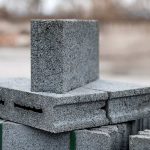Cavity walls are those which are constructed in that way that an empty space or cavity is left between the single wall. They are also known as Hollow Wall.
Cavity walls are two walls constructed as a single wall. A little space is lifted between these two walls for insulation purposes.

These two walls having little space between them for insulation purpose are known as leaves of the cavity wall.
The outer wall is called an external leaf, and the inner wall is called an internal leaf.
The empty space or cavity size should be in between 4 to 10 cm. The internal and external leaves should have 10 cm thickness.
These two leaves of cavity wall are interconnected by links or metal ties for a strong bond.
Cavity Wall Construction.
The use of cavity walls is common in cold countries. However, one should know how they are constructed, and why.
The normal 275 mm (11 inches) cavity wall which is suitable for buildings not exceeding two stories in height, consists of two half brick (4 – 1/2 inch walls with 2 inches cavity).
Cavity Walls are useful in two ways. Firstly, the cavity prevents the dampness from the outer leaf percolating into the inner leaf.
Secondly, they provide excellent insulation from heat and sound.
However, when used in tropical countries, sufficient precautions must be taken to see that they do not become breeding places for lizards and insects.
The inner leaf is found to take a greater portion of the imposed load transmitted by floor and roof.
Hence, the two leaves of the wall are bonded together with ties (wall ties) usually placed 900 mm apart vertically and 450 mm horizontally in every 6th course staggered.
This gives more than two ties per square meter.
These wall ties are made from mild steel wires of 3 to 4 mm diameter or MS bars and fabricated to shapes as shown in the below Figure.


They are dipped in hot tar and sanded or made from galvanized steel to prevent rusting.
In very important works, copper may be used.
Wire ties are placed with their twisted end down to allow water, that may seep inside, to drip down in the cavity.
The bond to be used for both the leaves, when the thickness is half brick, is the stretcher bond.
Where the inner leaves are made thicker for carrying heavy loads. English bond can be used for that part.
Cavity walls require considerable care in design and supervision. Otherwise, their efficiency as insulators against driving rain, heat and cold will be seriously impaired.
Particular care is required at the top and bottom of the walls and around openings in the cavity wall construction.



Comments are closed